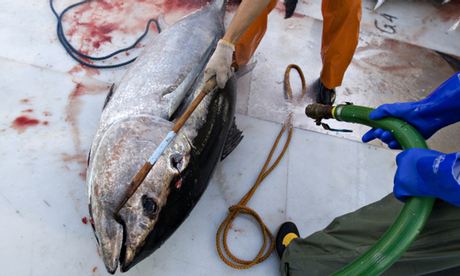
"The atomic" might sound like something more at home on a George Clinton album than in a business publication. But for Quartz, the Atlantic's mobile-first business news site, the term denotes the kind of unlikely data nugget behind several of its biggest stories, part of a recipe that has helped Quartz to 5 million readers in just 18 months.
And it isn't stopping there: Quartz co-president Jay Lauf says the company has 10 million users in its sights after beating initial audience predictions, while Quartz is projecting a 300% rise in ad revenue this year. Summer 2014 will see Quartz expand internationally, with the launch of an Indian edition in June that will include region-specific content.
Quartz was launched in September 2012 by Atlantic Media, parent company of highbrow US magazine the Atlantic, a 157-year-old title recently described by the New York Times as "the intellectual's monthly". In 2010 the Atlantic returned to profit thanks to a modern-thinking, digital-first approach, including the dismantling of its online paywall in January 2008.
Quartz aroused considerable interest with its combination of a mobile-first approach, an editorial ethos based on "obsessions" – essentially a changing lineup of newsworthy topics rather than traditional news beats – and a business model that eschewed a paywall and banner ads in favour of free access and native advertising from a small number of bluechip companies. These "obsessions" – "core topics and knotty questions of seismic importance to business professionals", according to co-president Kevin Delaney (then editor-in-chief) – were seen as a modern alternative to the traditional, silo-based approach to news, where reporters would follow their assigned beats regardless of the news agenda.
A year and a half on, Lauf, promoted to co-president from publisher last week, says this decision has paid off. Current obsessions on Quartz include the Ukraine crisis, the mobile web, "how we buy" and "the sea", suggesting a site that is considerably more openminded in its news agenda than most media operations focusing on business. "The vision I had was of a guard standing watching an empty fort," Lauf says. "For example, if you are covering European bonds and nothing happens for six months there's nothing to write about. We can re-deploy that resource."
News industry analyst Ken Doctor sees the obsession concept as helping to differentiate Quartz from its business competitors. "It connotes high energy and high attention," he says. "With its bloggy style, 'obsessions' says that these particular stories have been chosen for focus; they are not just a recitation of the facts on today's biggest stories." Which is all very well, but how many executives really want to read about "the sea"? More than you might expect: one of the site's biggest stories to date led with the news that 59% of the fish labelled "tuna" in the US is not actually tuna.
The story came about thanks to Quartz editors' search for "the atomic", digging deep into reports for the one surprising fact that will make a dynamic, unusual piece. "Our editors describe it as 'the atomic' – when you find some nugget of data that is maybe being ignored by other media then it does really, really well," Lauf says. It was also typical, at under 200 words (plus bar chart), of Quartz's twin focus on shorter stories (typically under 500 words) and longer, analytical pieces, cutting out the "death zone" of 500- to 800-word pieces that dominate online.
"We call it the Quartz curve," Delaney told the Digital Editors' Network event last year. "The place between 500 and 800 words is the place you don't want to be because it's not short and fast and focused and shareable, but it's not long enough to be a real pay-off for readers." The public seems to agree: Quartz passed 2 million monthly visitors in April 2013 and is now averaging close to 5 million a month, 42% of which come from outside the US. "Last year we set a goal of 3.1 million readers by the fourth quarter and we were over 4 million by Q4," Lauf says. "I think the goal this year is for 6, or 6.5 million, by the end of the year. We see 10 million in our sights."
Advertising is performing strongly too, with an 80% renewal rate among brands. Lauf won't say if Quartz is running at a profit but he does reveal that it is set to triple its ad revenues this year, with 50 different bluechip companies having advertised so far. Attracting quality native ads in numbers, he explains, is leading Quartz to "a longterm sustainable model" that could also serve for other top-end sites. "We are in an industry that has defaulted to the lowest common denominator options for monetising content on the screen," he says. "I think our ads are proving to work well, we are able to command a healthy premium for them."
Other plans for the near future include driving reader participation. Quartz took the first step down this difficult path last year when it introduced "annotations", allowing readers to add their comments to articles at paragraph level. "Annotations are designed to have quality not quantity and I think it has done that," Lauf says. "If you're going to have something to say on a more micro, paragraph level, it assumes a greater depth of knowledge on that part of the topic."
The idea that shifting comments to paragraph level will transform online mudslinging into a Socratic debate may seem rather idealistic. But it reflects a deep-seated belief in intelligent content and quality journalism that lies at the heart of what Quartz does.
"If you find great, smart content it will find an audience," Lauf argues. "I root for quality journalistic institutions to survive in any way they can. The world is a better place when you've got high-integrity, intellectually honest journalism being available."

